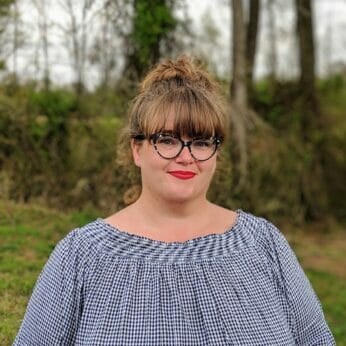Meet the Modern Farmer Using New Zealand Pigs to Restore a Former Tobacco Farm

[ad_1]
When Rachel Herrick purchased a 47-acre farm in Cameron, NC, she had her work lower out for her. The soil was stripped of vitamins, dry after many years of tobacco farming. However Herrick was undeterred. Farming was in her roots, and with some work and regenerative practices, she knew she might change the land for the higher.
And she or he has, making gradual however regular progress over the past seven years. She even named her land Sluggish Farm. However she hasn’t undertaken this transformation alone. As a substitute, she’s had a crew of helpers by her aspect: 25 roly-poly pigs, her secret weapon for soil well being.
Herrick retains kunekune pigs, a breed domesticated in New Zealand—kunekune means “fats and spherical” in Maori—and they’re excellent for the small farmer. The pigs fortunately chew their means by means of the broadleaf weeds that pop up throughout her fields, which different livestock received’t contact. “They preserve pasture methods balanced in order that unpopular vegetation can’t simply take over,” says Herrick.
Herrick grew up engaged on her household’s 60-acre farm in Maine, the place they raised and offered beef, pork, poultry, eggs and produce. Like many farming households, her dad and mom inspired her to depart the enterprise to go to varsity. After graduate college, she spent a decade pursuing a profession in combined media artwork earlier than realizing that farming themes have been on the forefront of her work.
“It solely took me, like, 10 extra years to understand that it was bananas of me to make artwork a few factor that I knew tips on how to do,” she says. “[I could] be half of the particular change that I longed for.”

Rachel Herrick. Images by Christine Corridor.
So Herrick put away her artwork provides and returned to North Carolina, beginning Sluggish Farm. The property was a foreclosures that had been unoccupied for a decade, however Herrick was intrigued by the itemizing. It included a home, two barns and a pond, and it was already enclosed with a fence, so the muse was there. She says she knew she was house midway up the driveway.
She introduced in goats to care for the overgrowth and provides the soil a lift of vitamins. After a 12 months and a half, she noticed vital enhancements within the pastures. However goats solely eat overgrowth at their knee stage, so she wanted livestock to care for the decrease weeds.
That’s when she turned to kunekune pigs. Kunekunes are small, docile pigs with quick, upturned snouts that forestall them from uprooting the grime like conventional hogs. When making an attempt to revive topsoil, the very last thing you need is to until it up, so that they have the right abilities for the job. They pull their weight on her farm by merely consuming and pooping.
“They munch broadleaf weeds and depart behind this lovely, fairly pH-neutral poo that the dung beetles go loopy ([for],” she says. “If you will get your dung beetles excited concerning the undertaking, they’ll accomplish that a lot of the give you the results you want. They make all of the [pig] poop into tiny little balls after which tuck it like an inch under the soil for you. That’s precisely what you need for those who’re making an attempt to construct topsoil.”
Maori individuals in New Zealand domesticated kunekunes to stay among the many villagers, so they’re naturally laid again and pleasant. They’re common amongst small farms and family-owned operations as a result of they eat about one-fourth of the grain wanted for the standard pig and are joyful to roam fenced pastures with out making an attempt to flee.
“Kunes don’t usually push fences, which is one other large deal. Farmers spend a whole lot of time fixing fences, and we don’t usually find it irresistible,” she says.
For Herrick, the pigs are an integral a part of the farm, contributing to a holistic setting. That’s what she was in search of when she began Sluggish Farm, a spot to maneuver away from the farming strategies she grew up with and lean into practices that labored with the land as a substitute of towards it.
“I’m fascinated by the historical past of farming by way of what it will possibly train us about slower, extra sustainable strategies,” says Herrick. “These are of us that took their time, so that they didn’t should repeat themselves they usually weren’t making an attempt to make use of a whole lot of inputs they didn’t have.”
Herrick retains a everlasting herd of 25 kunekunes, and she or he additionally breeds them for different farms wanting a greater option to handle their lands. They’re nonetheless a comparatively uncommon breed, so she is cautious to maintain the diversified bloodlines she has introduced in from locations like California, Pennsylvania and Virginia to make sure her pigs are wholesome and genetically numerous.
They stay amongst her different livestock, together with chickens, Ancona geese, geese and guineas, and she or he says the pigs are simple to please and get together with everybody. Give them a pasture and a few grain they usually’ll fortunately do the work.
[ad_2]



